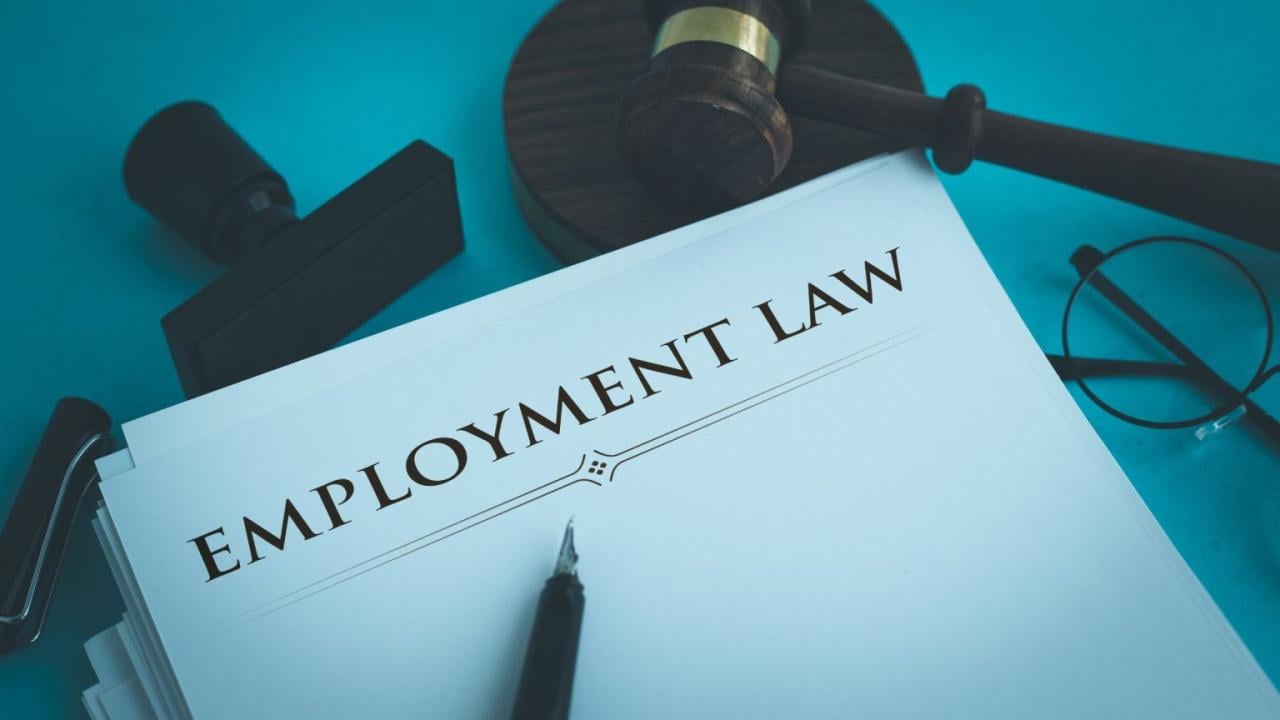The modern workplace is in a constant state of flux. From the rise of the gig economy and remote work to the increasing demands for diversity and inclusion, the traditional employer-employee relationship is being fundamentally redefined. This dynamic environment has led to a seismic shift in the legal frameworks that govern the workplace. Evolving Employment Law is a critical field that is actively reshaping how businesses manage their workforce and how workers protect their rights. This article will provide a comprehensive overview of the key drivers behind these changes, the new legal challenges they present, and the strategic implications for employers and employees alike. We will delve into critical areas such as worker classification, discrimination in the digital age, and the legal complexities of a globalized, remote workforce, offering a deep dive into how legal systems are adapting to the future of work.
The Fundamental Shift in Worker Classification

One of the most contentious and rapidly evolving areas of employment law is the debate over worker classification. The traditional distinction between an “employee” and an “independent contractor” is no longer a clear-cut matter, especially in the gig economy.
A. The Gig Economy and the Misclassification Battle: Gig economy companies, such as Uber and DoorDash, have built their business models on classifying workers as independent contractors. This model offers flexibility for both the company and the worker but also exempts the company from a host of legal obligations, such as minimum wage, overtime pay, and workers’ compensation.
- The “ABC Test”: In response to this, jurisdictions around the world are adopting new, stricter tests for worker classification. California’s Assembly Bill 5 (AB5) is a landmark example, which uses the “ABC Test” to determine if a worker is an employee. The test presumes a worker is an employee unless the company can prove three things: that the worker is free from the company’s control, that the worker performs tasks outside the company’s usual course of business, and that the worker is customarily engaged in an independently established trade.
- The “Third Way” Approach: In some jurisdictions, policymakers are exploring a “third way,” which would create a new category of worker that receives some benefits and protections without being fully classified as an employee. This approach seeks to find a compromise that balances the flexibility of the gig economy with the need for a social safety net.
B. The “Employee” vs. “Contractor” Consequences: The legal classification of a worker has profound implications.
- Employee Protections: Employees are entitled to a host of protections, including minimum wage and overtime pay, unemployment insurance, workers’ compensation, and the right to organize a union.
- Employer Responsibilities: Employers of traditional employees have a number of legal responsibilities, including paying payroll taxes, providing a safe work environment, and adhering to strict anti-discrimination laws. For companies with a large workforce, a misclassification ruling can result in significant fines and back pay.
C. The Future of Worker Classification: The legal debate over worker classification is not going away. The future of employment law will likely involve more complex and nuanced legal tests, as well as new legislation that is specifically tailored to the unique nature of gig work and the modern, flexible workforce.
The Legal Landscape of the Remote and Hybrid Workplace

The shift to remote and hybrid work has created a new set of legal challenges that traditional employment law was not designed to address. The physical and jurisdictional boundaries of the workplace have been fundamentally redefined.
A. Jurisdictional and Tax Compliance: When an employee works remotely from a different state or country, they are often subject to the laws of their physical location.
- State and Local Laws: This can include different minimum wage requirements, overtime rules, paid sick leave policies, and anti-discrimination laws. A company with a national workforce must be in compliance with the laws of every jurisdiction where they have an employee.
- Tax Implications: Having an employee in a state can create a “tax nexus,” requiring the company to register and pay state income and payroll taxes there. For companies with an international remote workforce, the tax implications can be even more complex, with the potential for a “permanent establishment” and corporate tax liability in another country.
B. Workers’ Compensation and a Safe Work Environment: The employer’s responsibility for a safe workplace does not end at the office door.
- The “Home as Workplace” Dilemma: The employee’s home is now considered their workplace, and employers can be held liable for injuries that occur there while the employee is performing a work-related task. The legal battle is over how to define what constitutes a “work-related” injury in the home.
- Ergonomics and Safety: Companies have a legal and ethical responsibility to ensure that their remote employees have a safe and ergonomic workspace. This includes providing ergonomic equipment and guidance on setting up a healthy home office.
C. Employee Privacy and Monitoring: The use of technology to monitor remote employees’ productivity and activity raises significant legal and ethical privacy issues.
- The “Reasonable Expectation of Privacy”: In many jurisdictions, an employee has a “reasonable expectation of privacy” in their home. Companies must be careful about how they monitor employees, as intrusive surveillance could be a violation of the employee’s legal rights.
- Clarity and Consent: The best practice is to be transparent with employees about what is being monitored and to get their consent. A clear, well-written remote work policy that outlines the company’s monitoring practices is essential.
D. Data Security and Confidentiality: The decentralized nature of remote work creates new and significant data security and confidentiality challenges.
- Protecting Company Data: Companies must have clear policies on how employees must handle confidential data, including requiring the use of a Virtual Private Network (VPN), encrypted communication tools, and a secure cloud-based data storage system.
- BYOD Policies: A “Bring Your Own Device” (BYOD) policy can save money but can also create significant security and privacy risks. A company must have a clear policy on the use of personal devices for work and a process for ensuring that all company data is deleted when an employee leaves.
The Rise of AI and Digital Discrimination
The integration of artificial intelligence into hiring, promotion, and performance management is creating a new frontier of legal challenges related to discrimination and bias.
A. Algorithmic Bias in Hiring: AI-powered hiring tools, such as résumé screeners and video interview analyzers, can inherit and amplify the biases present in their training data.
- The Legal Challenge: If an AI hiring tool systematically screens out qualified candidates from a protected class, the company that uses it could face a discrimination lawsuit. The legal challenge is to prove that the algorithm is biased, as the algorithm itself may not be explicitly discriminatory.
- Auditing and Fairness: The field of “algorithmic fairness” is a legal and ethical response to this. It focuses on creating and auditing AI systems to ensure they are fair and unbiased. Companies are being compelled to audit their AI tools to ensure they are not creating new forms of discrimination.
B. Digital Discrimination in the Workplace: The use of AI in performance management, surveillance, and other workplace decisions can also lead to new forms of discrimination.
- Predictive Performance Tools: AI tools that predict an employee’s performance or risk of leaving the company can create a self-fulfilling prophecy or be based on biased data, leading to unfair treatment.
- Data Privacy: The use of AI to monitor employees’ productivity and activity raises significant data privacy and ethical issues. The legal system is still grappling with how to balance an employer’s right to manage their workforce with an employee’s right to privacy.
C. New Legal Protections: In response to these challenges, new laws are being proposed and passed to address AI and digital discrimination in the workplace. New York City, for example, has passed a law that regulates the use of AI in hiring and requires an independent bias audit of these tools. This is a clear signal that governments are taking the issue of algorithmic bias seriously.
The Push for Diversity, Equity, and Inclusion (DEI)
DEI has moved from a voluntary initiative to a legal and social mandate. Employment law is evolving to compel companies to create more diverse, equitable, and inclusive workplaces.
A. Pay Equity and Transparency: The legal push for pay equity is gaining momentum, with new laws requiring pay transparency and prohibiting employers from asking for a candidate’s salary history. These laws are designed to close the gender and racial pay gaps.
- Legal Enforcement: The Equal Employment Opportunity Commission (EEOC) and other government agencies are actively enforcing pay equity laws, and companies that are not in compliance can face significant legal and financial penalties.
B. Anti-Harassment and Anti-Discrimination Laws: Laws on harassment and discrimination are being expanded to include a wider range of protected classes and to address new forms of harassment, such as cyberbullying and digital harassment.
- Bystander Intervention: Some companies are implementing new training programs on “bystander intervention,” which teaches employees how to safely intervene when they see harassment or discrimination happening.
- The “Reasonable Person” Standard: The legal system is re-evaluating the “reasonable person” standard in harassment cases, with a greater focus on the victim’s perspective.
C. The Role of the Board: The legal liability for a company’s DEI performance is expanding to the board of directors.
- Breach of Fiduciary Duty: Shareholders can sue the board, arguing that a failure to manage a company’s DEI risks is a breach of their fiduciary duty, which can lead to a loss of talent, a decline in reputation, and a drop in stock price. This new legal theory is compelling boards to take a more active role in a company’s DEI strategy.
Conclusion
Evolving employment law is a clear reflection of a new social contract for work. The traditional employer-employee relationship is being redefined by a demand for flexibility, a commitment to equity, and the challenges of a digital-first world. The legal battles over worker classification, the jurisdictional complexities of remote work, and the push for algorithmic fairness are not just legal issues; they are fundamental debates about what a fair and just workplace looks like in the 21st century. The path forward is not simple, but it is clear: the future of work demands a new era of legal innovation, technological adaptation, and a deep commitment to building a workplace that is designed for all. The companies that navigate this new landscape with foresight and integrity will be the ones that thrive.








